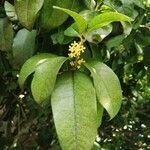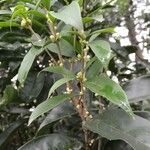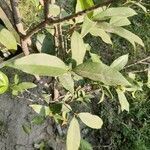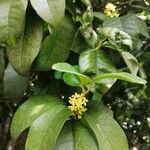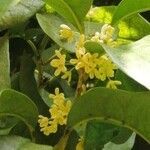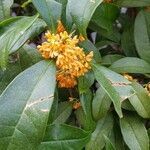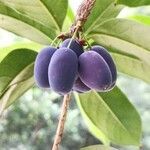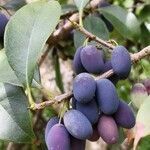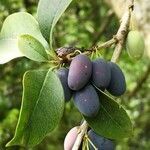An evergreen shrub or small tree. It grows 3-5 m high and sometimes to 10 m high. The leaf stalk is 0.8-2 cm long. The leaf blade is narrowly oval and 5-9 cm long by 2-3 cm wide. It is leathery. The base is broadly rounded or wedge shaped and it narrows to a long tip. There are often teeth along the top edge. The veins are raised underneath. The flowers are in the axils of leaves. There are many flowers in a group. They are yellowish or orange. The flowers have a sweet scent. The fruit is a fleshy fruit with a hard covering over the seed. The fruit is purple black and oval. It is 1-1.5 cm across.
